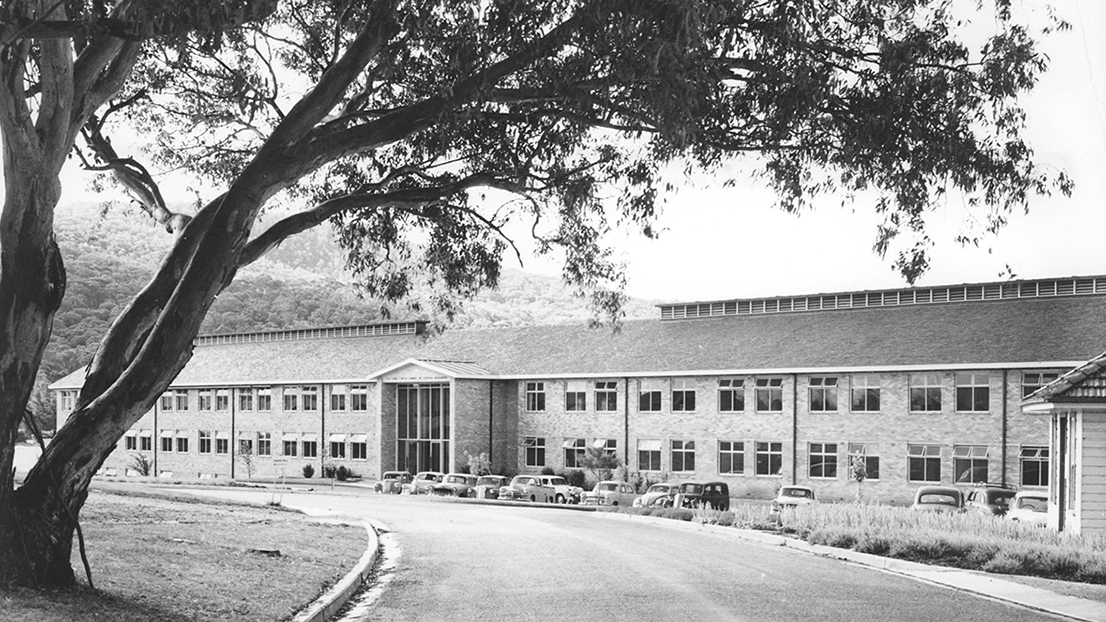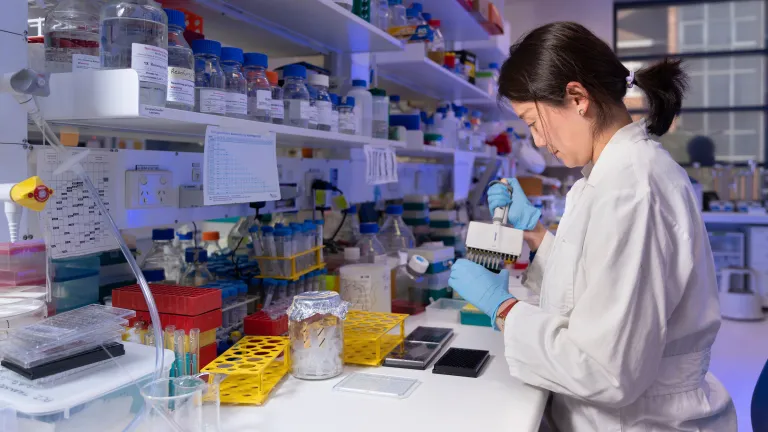
Our success
As Australia's national medical research institute, JCSMR has been at the forefront of scientific discovery and innovation for over seven decades. The School's inception was the brainchild of the visionary Australian-born Baron Howard Florey, a Nobel laureate renowned for his work in developing penicillin as a life-saving drug. Since then, JCSMR has evolved into a prestigious institution, dedicated to advancing medical research and shaping the future of health care through pioneering discoveries, interdisciplinary collaboration, and a commitment to excellence.
Our story

Photo: Commonwealth News and Information Bureau.
Seventy-five years ago, the John Curtin School of Medical Research was born out of an aspiration to bring hope and progress to post-war Australia.
Founded on the recommendation of 1945 Nobel laureate Sir Howard Florey, JCSMR was established as one of the first four research schools at the Australian National University and was named in honour of Prime Minister John Curtin, who championed a 'new social order' for the country after World War II. From its early days, JCSMR was determined to make significant strides in research and become Australia's peak national medical research institute.
Early designs for the School were undertaken by Professor Brian Lewis, the first consultant site and building architect for the ANU. His resignation in 1953 led to the project being taken over by architects Mussen Mackay & Potter, with the project completed in January 1957. The building was divided into blocks and wings, with the largest space dedicated to the Department of Medical Chemistry (Wing A). This wing also housed Experimental Pathology. The Department of Microbiology occupied three levels in the front block (Wing B), with direct access to Wing E, which was home to a large infected-animal house. Animals under experiment were housed in Wing F. The Departments of Physiology and Biochemistry were allocated floors in Wing C.
Over the last 75 years, JCSMR has evolved into a global leader in medical research. It has been home to three Nobel Prize Laureates Professor John Eccles (1963), Professor Peter Doherty and Rolf Zinkernagel (1996). It was also the scene of Professor Frank Fenner’s groundbreaking work on eradicating smallpox and pioneering the use of myxomatosis in controlling the rabbit population.
JCSMR has nurtured the talents of countless early and mid-career researchers, who have gone on to become established leaders in their fields. We have also made remarkable progress in education and public engagement, becoming a vital and trusted part of the nation's conversations on medical research and health care.
Our milestones
Historical highlights:
- 1946: ANU is established by an Act of Parliament with authority for a 'John Curtin School of Medical Research.'
- 1948: ANU Council establishes JCSMR.
- 1949: JCSMR foundation stone is laid by Prime Minister Ben Chifley.
- 1958: The original JCSMR building is opened by Prime Minister Robert Menzies.
- 1963: Sir John Eccles shares the Nobel Prize in Medicine with Sir Alan Lloyd Hodgkin and Sir Andrew Fielding Huxley.
- 1987: JCSMR designated a WHO Collaborating Centre for training and research in biomedical sciences.
- 1988: Professor Frank Fenner is awarded the Japan Prize.
- 1996: Professor Peter Doherty shares the Nobel Prize in Medicine with his JCSMR colleague, Professor Rolf Zinkernagel.
- 2000: Professor Frank Fenner wins the Albert Einstein World Award for Science.
- 2002: Professor Frank Fenner wins the Prime Minister's Science Prize.
- 2004: Professor Judith Whitworth is awarded the ACT Australian of the Year.
- 2008: Professor Carola Garcia de Vinuesa wins the Science Minister’s Prize for Life Scientist of the Year.
- 2009: JCSMR new building Stage I is opened by Prime Minister Kevin Rudd.
- 2013: ANU and ACT Government establishes the Centenary Chair in Cancer Research, a tenured position associated with JCSMR.
- 2013: Establishment of the National Centre for Indigenous Genomics (NCIG).
- 2016: Professor Alan Finkel becomes Chief Scientist of Australia.
- 2021: Establishment of the Shine-Dalgarno Centre for RNA Innovation (SDCRI).
- 2022: Professor Si Ming Man wins the Frank Fenner Prize for Life Scientist of the Year, and the Prime Minister's Science Prize.
Keep exploring
Engage with us
Contact a Course Advisor Make an enquiry
Plan a visit Give to ANU




